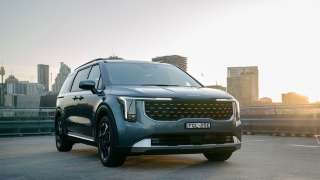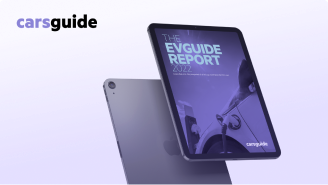
The pros and cons of hybrid cars
- Mitsubishi SUV Range
- SUV
- Hybrid Cars
- Mitsubishi
- EV Advice
- Mitsubishi Advice
- EV
- EVs
- Electric
- Electric Cars
- Hybrid
- Hybrid cars
- Plug-in hybrid
- Green Cars

Hybrid cars may sound like some impossibly complicated technology - as if internal-combustion engines weren’t tricky enough - but the exact opposite is true. What they are, and what they do, is as simple as making a cup of tea.
Hybrids are just cars with both a petrol or diesel-powered combustion engine, and an electric motor powered by a battery - it’s as simple as that. A hybrid is a combination of two things - like a tea bag and hot water - in this case an engine, powered by fuel, and a motor, powered by electricity (from a battery, which you must keep charged up, just like your phone).
Read more about hybrid cars
There are, however, a few different types of hybrids that you should become acquainted with, so if you’re wondering ‘Are hybrid cars good?’, there’s no short, simple answer, since there are advantages and disadvantages of hybrid cars that vary between each type. The short answer, of course, would be yes, they are good… for reducing your fuel use and your emissions.
Hybrid cars are gaining in popularity - over 17 million hybrid vehicles have been sold globally since their emergence on the market in 1997 - and are usually seen as a half-way point between ICE vehicles and Electric Vehicles (EVs) for those not ready to go fully electric yet.
Below you’ll find some facts regarding both the disadvantages and benefits of hybrid cars should you be considering the hybrid route in the near future.
Types of hybrid cars
Hybrid Electric Vehicle (HEV)


Download the EVGuide Report, 2022
Australia's one-stop snapshot of all things relating to electric cars.
When people talk about a ‘hybrid’, this is what they usually mean: a vehicle that features a fuel-consuming ICE, as well as a battery-powered electric motor.
In a standard hybrid, the ICE is the main source of power, with the electric motor chiefly used as a way to add power during instances like acceleration, or starting the car up quickly after it has been idling at traffic lights.
A hybrid’s battery is self-charging, which happens thanks to a process called ‘regenerative braking’, where kinetic energy captured when the vehicle slows down or comes to a stop is either transferred to the battery for storage or transferred directly to the motor for immediate use.

There’s also what’s called a Mild Hybrid Electric Vehicle (MHEV), where the electric motor battery is much smaller than a standard hybrid, and therefore it only assists in a very - as you’d guess from the name - mild capacity.
The starter motor in mild hybrids also functions as an electricity generator, sending energy back to the battery after ignition.
You may also hear about range-extender hybrids (REx) - this is when an ICE is used only to create energy for the battery, with an electric motor always powering the vehicle’s wheels.
Plug-in Hybrid Electric Vehicle (PHEV)
PHEVs have been less common in Australia, but that’s changing thanks to an increase in models from a large swathe of car manufacturers, most notably Mitsubishi.
The first major difference between a PHEV and a standard hybrid is that PHEVs use the battery-powered electric motor as the chief source of power, with the ICE really only there to act as an emergency back-up should you run into problems and find yourself out of charge.

This means the battery packs in PHEVs are bigger, resulting in a larger all-electric driving range.
The second major difference is that the battery in a PHEV needs to be plugged in (hence the Plug-in part of the title) to an external power source to be charged, like a home socket, wallbox charger or a public charging station.
Hybrid cars: pros and cons
Pros
Better for the environment. While hybrids aren’t zero-emission, like EVs, they do cut down on harmful greenhouse gas emissions from the tailpipe, meaning your hybrid is being a little kinder to the planet (the difference a mild hybrid makes is negligible).
Better fuel consumption. The bonus of having a battery-pack means you’re relying on your gas-guzzling ICE a whole lot less, reducing your fuel intake and saving yourself money in the process. A lot of hybrids will also let you drive in ‘all-electric’ mode, at least some of the time, meaning you theoretically could go without paying another cent for fuel altogether.
PHEVs mostly rely on electricity rather than petrol, with the former being considerably cheaper than the latter.
Better performance. The combination of an ICE and an electric motor adds extra power and enhanced performance to a hybrid, since electric motors require zero revs to achieve maximum torque. And, in ideal conditions, you’re getting power from both sources at once.
No range anxiety. There needn’t be a fear of your battery running out of charge and finding yourself becoming stranded, since the ICE is always there to provide support and back-up when needed. In regards to HEVs, there’s also no need to every worry about charging, either, since the car recharges the battery itself.
Cons
Cost. While prices have slowly been coming down as popularity increases, hybrids are still more expensive than ICE vehicles, which can be a deterrent to some. It can be argued this cost is made up for by savings in fuel, but that doesn’t take away the fact that up-front costs are still more expensive.
More expensive to maintain. The combo of an ICE and a battery pack/electric motor means there’s potentially more that can go wrong with the vehicle, making it more expensive to repair. Degradation of the battery over time is also something to be aware of, although this usually happens over a period of years (typically batteries are guaranteed for eight years).
Charging infrastructure. PHEVs of course require charging, which is easy enough to do at home, but if you’re out and about looking for a public charger, you may notice that Australia’s charging infrastructure isn’t quite where it should be (although public chargers are increasing in number around the country, which is promising).
Luggage space. The inclusion of large battery packs in hybrids, particularly PHEVs, can sometimes result in less luggage space within the vehicle.











Comments